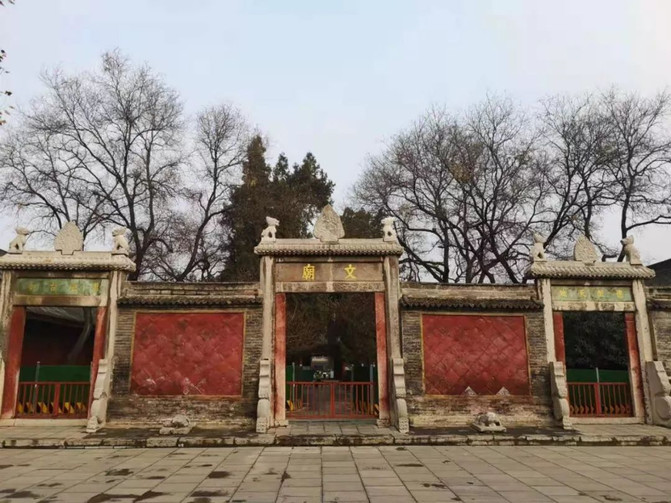Stele Forest Museum, an endless story of cultural relics
Xi'an, the ancient capital of the thirteen dynasties, seems to contain a culture in every inch of land. If you look carefully, you can find traces of ancient life in the museum exhibitions preserved in the world.
The Forest of Steles Museum consists of three parts: the Confucian Temple, the Forest of Steles, and the Stone Carving Art Museum.

After entering the door, you will be greeted by the "Taihe Yuanqi Workshop" built during the 20th anniversary of Wanli of the Ming Dynasty. It was built with a donation of more than 400 taels of gold by the royal family Zhu Weizhen, which is equivalent to a huge project worth several hundred million yuan now. The main meaning of this archway is that Confucius 'thoughts have reached the highest level of mankind and can accommodate everything in the world, just as heaven and earth are born of everything.
On both sides of the archway are two semicircular pools called Panchi. In ancient times, the school was called Pangong, and the scholar in the middle school was called "Ren Pan", hence the name Panchi. The bridge above Panchi is called Panqiao.Only those who have become a scholar are qualified to walk Panqiao and wash pens in Panchi.

Opposite the Panshui Bridge is the Lingxing Gate, next to the ticket gate in the scenic area. The ancients believed in ghosts and gods and said that Confucius was a Wenqu star who descended to the world, hence the name Lingxingmen. There are three gates in the Lingxing Gate. Every time the sacrificial ceremony is held, the senior officials will go to the middle gate, ordinary officials will go to the west gate, and the rest of the people can only go to the east gate.
After entering the Lingxing Gate, you will arrive at the first courtyard of the Confucian Temple. Near the West Gate, there is an exhibition of epitaph of the Northern Wei Dynasty, which displays the epitaph of many figures during the Northern Wei Dynasty, ranging from the epitaph of princes and generals to the epitaph of palace female chefs. It is worth seeing.




After arriving at the Forest of Steles Square, we will reach the core area of the Forest of Steles. The buildings behind them are all antique buildings.
The Forest of Steles Square was built on the site of the original Dacheng Hall of the Confucian Temple. The most eye-catching stele pavilion in the middle has the word "Forest of Steles" written on it.The word was written by Lin Zexu, but the inscription on the stele is missing a stroke. Some people say it is a typo, while others say that ancient people deliberately wrote "wrong" in pursuit of symmetry.

Inside stands the stone platform of the filial piety scripture, engraved with a masterpiece written by Confucius"The Book of Filial Piety" is the number one big brother in the forest of steles.The reason was that Li Longji, Xuanzong of the Tang Dynasty, launched the Xuanwu Gate mutiny, killing his relatives and killing his father. In order to avoid others saying that his name for succeeding to the throne was not right, he announced that he would govern the world with filial piety. He personally wrote a preface, annotated and wrote the "Book of Filial Piety", and Prince Li Heng wrote it for it, and engraved a tablet to tell the world that he was very filial.

In front of an antique building courtyard on the west side of Beilin Square, there are many horse-tying piles, all of which are cultural relics and emoticons, showing tourists the ancient folk art of Shaanxi.


Cultural relics of the same level as the Six Horses Painting include the stone statue of Laojun, a relic of Huaqing Palace, the stone tomb of Li Shougui, and Li Yuan's 10-ton tomb stone rhinoceros.

Previous Article:Silk Road Happy World "36-Hour Micro Vacation Destinations" media conference was successfully held
Next Article:8000-kilometer self-driving tour
